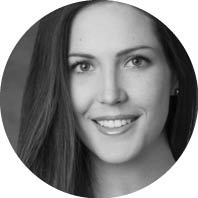supported by


Dr. Brissette is an Assistant Professor of Ophthalmology at Weill Cornell Medicine in New York.
Please share with us your background.
I grew up in Toronto, Canada, and attended a high school for the performing arts. I loved the arts, but when I started at McGill University for college, I decided that medicine was the right career path for me. I then attended Queen’s University, where I completed my ophthalmology residency and earned a Master of Science degree. I made the move to the United States for my cornea fellowship at Weill Cornell Medicine in New York City, and I was lucky enough to be hired as faculty at the completion of my training.
What drew you to ophthalmology and, specifically, to your field of interest?
When I started medical school, I never imagined that I would pursue ophthalmology; I thought I was going to be an emergency physician. However, when I took an elective in ophthalmology, I fell in love with the surgical nature of the specialty. Ophthalmology is a great mix of both surgical and medical expertise. Cornea and anterior segment was a great fit for me because I can pursue everything from dry eye disease (DED), to refractive surgery, to cataract surgery, to corneal transplants. Although it is a highly subspecialized field, ophthalmology itself is so complex that I always feel challenged in my work.
Please describe your current position.
I am currently an Assistant Professor of Ophthalmology at Weill Cornell Medical College (WCMC) in New York City. I perform laser refractive, cataract, and corneal surgeries. I also have an interest in the ocular surface and run a DED clinic 2 days every month. I love research and am actively involved in many studies. I also lecture and do clinical and surgical teaching with the residents and fellows at WCMC.
Who are your mentors?
I am lucky to have had many mentors throughout my training and career. My program director at Queen’s University, Dr. Stephanie Baxter, was my first mentor in ophthalmology and got me interested in cornea research. I worked closely with Kashif Baig, MD, at the University of Ottawa on research into corneal transplantation; he also served as a mentor for my master’s thesis on ergonomics in ophthalmology. During fellowship, I was lucky to work with many cornea specialists, including Christopher Starr, MD; Jessica Ciralsky, MD; Ana Alzaga, MD; Kimberly Sippel, MD; Edward Lai, MD; and Christopher Sales, MD. They each helped guide me through my fellowship training and have served as excellent mentors early in my career.
What has been the most memorable experience of your career thus far?
What really stands out for me was getting to speak at the American Society for Cataract and Refractive Surgery (ASCRS) Cornea Day in 2017 on penetrating corneal trauma and cataract surgery. I remember attending the ASCRS meeting early in my training and being so impressed by the speakers at the podium. Having the opportunity to present research and insights to colleagues from around the world is an incredible experience.
What are some new technological advances that you have found particularly exciting? Which advances in the pipeline are you most enthusiastic or curious about?
I think the advances in presbyopia-correcting IOLs are extremely exciting. It is incredible how surgical advances in cataract surgery have completely changed this procedure. Patients have high expectations for their vision after cataract surgery, and we are getting closer and closer to being able to fully deliver on them.
What is the focus of some of your research?
My research is primarily in DED. My colleague Dr. Christopher Starr and I have a great research team at WCMC. We are currently conducting a number of studies looking at subjective and objective measures of dry eye, DED’s impact on refractive corneal and cataract surgery, and outcomes of dry eye intervention. I also have an interest in ergonomics in ophthalmology and the prevention of work-related musculoskeletal pain. For my master’s thesis, I developed an educational module for residents that teaches them how to properly position at the microscope in order to prevent future injury.
What is a typical day in your life? What keeps you busy, fulfilled, and passionate?
A typical day involves either the clinic or the OR. I love to operate, and the OR days are the highlight of my week. We have a great team of scrub nurses, and we all try extremely hard to make it a positive experience for patients. Outside of work, my interests are fitness, food, and friends. It has been wonderful living in New York City because after work I can spend my time going for a run in Central Park and then meet friends for a late dinner at a new restaurant. I also love music and the arts and have had the opportunity to see some amazing performances across the city.
What advice can you offer to individuals who are just now choosing their career paths after finishing residency or fellowship?
My advice would be to be open to new opportunities as they come. I always thought I would move back to Canada after fellowship, but a great job opportunity presented itself in New York, so I decided to stay and pursue this position.
Tell us about an innovative procedure you are performing or a new imaging/diagnostic tool that has improved your practice.
I think meibography has considerably improved patients’ understanding of blepharitis. We use the LipiView Ocular Surface Interferometer (TearScience) in our clinic at WCMC. Having the ability to show patients the anatomy of their glands has helped with patient education in DED and blepharitis and has also helped improve compliance with dry eye therapies. One device that I am extremely interested in obtaining for the clinic is the Keratograph (Oculus). It can measure tear meniscus height and noninvasive tear break-up time and even objectively measure conjunctival redness! I would love to have this device for our future studies in DED at Cornell.



